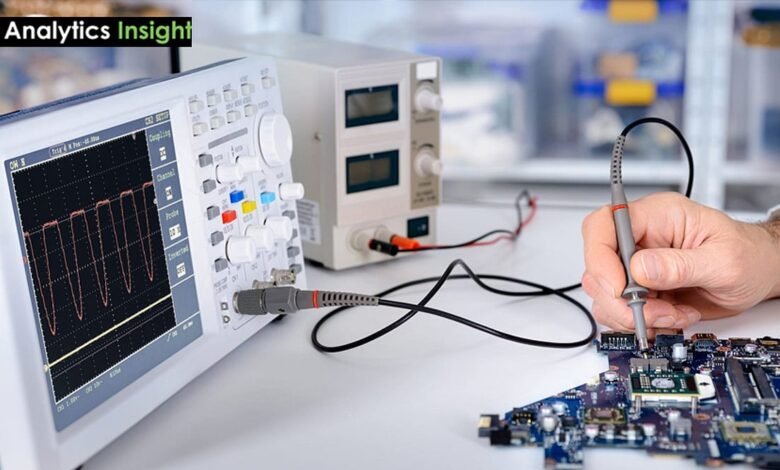Electromagnetic Compatibility (EMC)

What is electromagnetic compatibility (EMC)?
(EMC) indicates the ability of the electronic device to work effectively within its environment without disrupting or disrupting other equipment through electromagnetic overlap (EMI). It focuses on reducing unwanted emissions and promoting immunity with external overlap. EMC guarantees a smooth operation of multiple devices in common environments such as hospitals, factories and aircraft.
Types of electromagnetic compatibility (EMC)
1. Emissions and immunity (allergies)
Establishing and release electromagnetic energy from a device to the environment. The emissions can be:
Immunity (allergies):
The device’s ability to work properly in the presence of electromagnetic disorders. I immunity can be tested for:
2. Types of conjugation mechanism
Emc radioactive:
It relates to the electromagnetic energy that travels through space (air) and can cause overlap or be vulnerable to it.
I conducted EMC:
It includes electromagnetic energy that travels along connectors such as wires, cables, or circuit effects.
Electrostatic discharge (ESD):
Sudden transfers of static electricity that can disrupt or damage electronic equipment.
3. EMC phenomena and test types
-
Raditional emissions tests: Measuring unwanted electromagnetic energy emitted in the environment.
-
Emissions tests: Evaluation of electromagnetic energy transmitted through power lines or signal.
-
Radio Immunology tests: Evaluating the device’s resistance to electromagnetic fields from external sources.
-
Violence tests: Test resistance to disorders through cables.
-
Magnetic field immunity tests: Performance assessment against magnetic field disorders.
-
Facial and Consumer tests: Evaluation of effects such as voting fluctuations and wavelength.
Military and civil requirements:
Specific criteria and testing methods for emissions and immunity, including:
-
The emissions/immunity that were made and radiated for power, interconnection, and antenna cables.
-
Magnetic and electrical fields, conjunction of ground handicapped, and more.
The importance of electromagnetic compatibility (EMC)
It prevents overlap between devices
EMC guarantees that electronic devices are close without causing electromagnetic interference or suffering. Without EMC, devices can disrupt each other, which leads to breakdowns or loss of data or even material damage-especially in environments that contain many electronic systems, such as hospitals, factories or databases.
It guarantees a reliable and safe process
By compliance with EMC standards, devices are likely to work properly in their intended environments. This is very important for sensitive equipment such as medical devices, industrial machinery and navigation systems, as interference can lead to safety or lead to operational failure.
Compliance with regulations
Many countries and regions require electronic devices to meet specific EMC standards before marketing or using them. Compliance is imposed by agencies such as the Federal Communications Committee in the United States and through the directives of the European Union in Europe. Meeting these criteria is not only a legal condition but also a sign of the quality and reliability of the product.
It enhances the reliability of the product and the reputation of the brand
It determines the EMC test and addresses possible overlapping problems while developing the product, leading to more powerful and reliable products. This reduces guarantee claims, increases customer satisfaction, enhances the brand reputation.
Reduces operational disorders and service costs
Devices that do not meet EMC criteria may overlap or affected by overlap, which leads to costly summons, repairs, or operational disruption. Early EMC test helps to avoid these problems, reduces long -term service costs, and speeds up marketing time by capturing problems before issuing products.
It protects the sensitive and critical infrastructure
In environments such as hospitals or cloud data centers, EC is vital to ensuring that critical-monitoring systems, MRI or servers are not disrupted by electromagnetic emissions from nearby devices, and protect both data safety and human safety.
Supports technology progress
When electronic devices are more prevalent and complicated, the importance of EMC continues to grow. It is a basic system that enables safe coexistence of various technologies, supporting innovation and expanding modern electronic systems.
Using electromagnetic compatibility cases (EMC)
Consumer electronics (smartphones, tablets and laptops)
Manufacturers such as Apple are accurately test devices such as iPhone devices for EMC compliance to reduce interference and ensure performance. Technologies include shielding, optimal vinyl vinyl layouts, and lighting integration analysis, allowing multiple devices to coexist without disturbance.
With the emergence of electric cars (EVS) and self -ruling driving, cars manufacturers (for example, Tesla) merge EMC strategies such as sensitive shielding electronics, strong grounding, and accurate sensor integration. This ensures that high -voltage systems and vehicle communication networks do not interfere with each other, while maintaining safety and reliability.
Companies such as MedTronic implement strict EMC measures in devices such as heartbeat and transplant medical equipment. Special shielding, isolation and strict tests are used to prevent electromagnetic interference that can display the patient’s safety or device function.
Aviation leaders such as Boeing and Airbus apply advanced EMC techniques to protect aviation systems, communications and radar from electromagnetic disorders. This includes wide shielding, choice of component, compliance with strict EMC standards to ensure reliable operation in harsh environments.
Wireless technology and communications
The prevalence of 5G, IOT and Wireless Charge presents new challenges for EMC. Companies such as Qualcomm uses advanced modeling and simulation tools to improve Chip and Hougenna designs, which reduces interference and ensuring reliable operation in crowded wireless environments.
Data centers and server rooms
Technology giants such as Google and Amazon employs EMC standards such as server, appropriate grounding, and cable management to prevent electromagnetic interference that can disrupt and store data processing processes.
Service providers such as Siemens and Vestas uses EMC strategies in wind turbines and solar panels to prevent electromagnetic interference from affecting the stability of the network and the reliability of equipment. Training and land techniques are necessary for operation without interruption.
Companies like Bombardier and Siemens integrate EMC into the designs of the train and signs system. The appropriate shielding and grounding prevents overlap that can affect communication and critical equipment on railway networks.
EMC is very important to operate reliable electrical equipment used in exploration, drilling, and extraction. Companies such as Schlumberger use shielding, grounding and EMC design to ensure performance under harsh electrical conditions.
Entertainment and broadcast
Studios and broadcasters (for example, Dolby Laboratories) are implemented in audio and video equipment to maintain signal accuracy and reduce interference, and ensure high -quality entertainment experiences.
Common questions about electromagnetic compatibility (EMC)
What is electromagnetic compatibility (EMC)?
EMC is the ability of an electrical or electronic device to properly work in its electromagnetic environment without causing electromagnetic or suffering (EMI). This means that the device does not disrupt other equipment or disrupt it.
Why is EMC important in product design?
EMC is essential to ensure that the products work naturally in complex electromagnetic environments, avoiding the deterioration of performance or failure due to overlap, and the harmful EMI is not generated that can affect other systems. It also helps products comply with legal standards, which reduces the risk of summons or penalties.
The EMC test measures the emissions of the device (the amount of electromagnetic energy from which it is emitted) and immunity (the external resistance of EMI resistance). The devices are tested in specialized environments to ensure that regulatory standards meet. EMC tests are required for market approval in many areas.
What happens if the product fails to test EMC?
If the device fails to test EMC, it must be redesigned to address issues-this can include adding training circuits, improve the liquidation or redesign circles. The product is re -tested to meet the required standards.
Why do regulations require compliance EMC?
EMC regulations protect critical infrastructure, ensure the reliability of the product, and prevents disturbances in environments with many electronic devices (for example, hospitals and airports). Compliance is mandatory in many industries, including medical, cars and space.
Can you give an example of EMC in daily life?
The modern smartphone is designed to work without interfering in nearby devices (such as radio or heart attack devices) and survival is not affected by its electromagnetic emissions.
What documents needed to comply EMC?
Manufacturers must submit test reports from approved laboratories that show that the device has passed all the required EMC tests. These documents are necessary for organizational approval and access to the market.
How did EMC awareness evolve?
EMC has become of increasing importance because the number and complexity of electronic devices has grown, especially in the sectors that interference can have important consequences, such as health care, defense and transportation.
For the latest news, exclusive and videos on WhatsApp
Don’t miss more hot News like this! Click here to discover the latest in AI news!
2025-06-02 04:44:00




